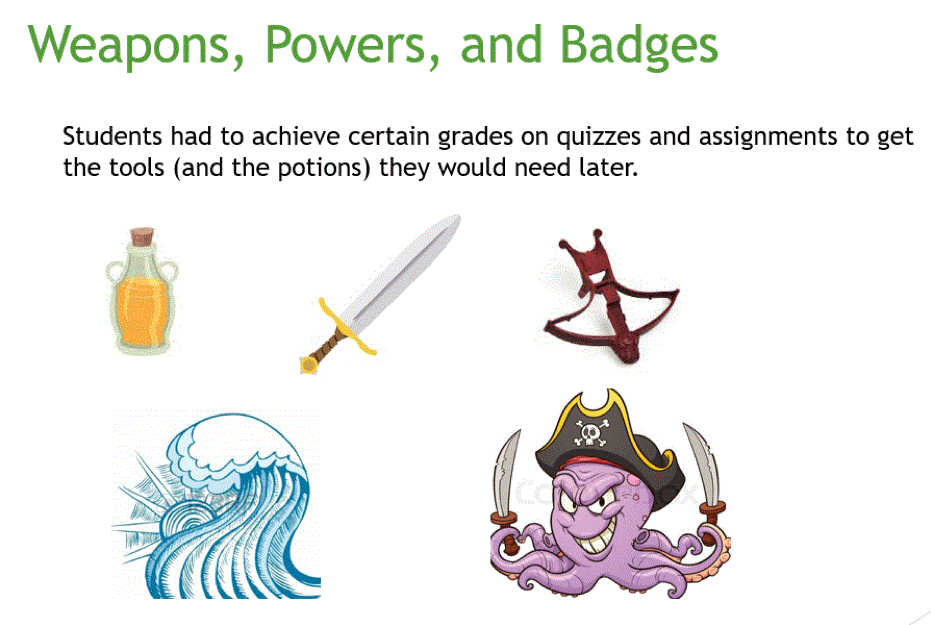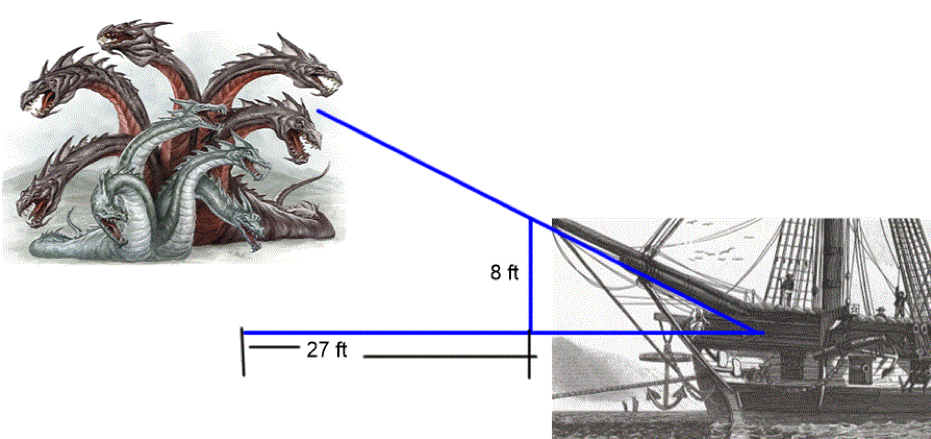Throughout North America, the attrition rate for first-year post-secondary level calculus is too high, despite the fact that many of the enrolled students have excellent grades from their secondary studies and most have already passed a high-school-level calculus course. I was looking for a way to increase students’ engagement and participation in first-year calculus, and decided adding gamification elements was a good option to try. As a recipient of a 2018 BCcampus Scholarly Teaching Fellowship Award, I was able to engage in scholarly research involving gamification in Calculus 1 and Calculus 2.
Post by Leslie Molnar, Instructor, College of the Rockies, 2018-19 Scholarly Teaching Fellow, BCcampus
So, what is gamification?
Gamification can be broken into two parts: design principles and design elements. Design principles (Dicheva, et al., 2014) include goal setting, customizing the learning environment to allow personalized experience and adaptive difficulty, short feedback cycles, accrual grading, freedom of choice, and multiple routes to success. Of these principles, the literature (Stott & Neustaedter, 2013) shows freedom to fail, rapid feedback, progression, and storytelling are consistently more successful than others in learning contexts.
Common design elements include points, levels, challenges, badges, leaderboards, peer interaction, replays, unlockable content, storytelling, and student customization. Many of these elements are standard, or available as add-ons, in current Learning Management Systems. Game design elements can make non-games more enjoyable, thus motivating and engaging students to spend more time doing a specific activity or performing that activity better (Goehle& Wagaman, 2016).

The philosophy behind gamification makes sense. For one, students grow up with games and usually have a positive association with the idea of ‘playing’. Games demonstrably motivate users to remain actively engaged in an activity for long periods of time. In addition, when students are encouraged to take risks, to experiment, and to repeat tasks until they are better at doing them, the focus is taken away from the final result and instead centred on the process of learning (Stott & Neustaedter, 2013). Rapid feedback encourages students, gives them an instant ‘reward’, and reduces the chance they will learn something incorrectly. Storytelling can give a seemingly unrelated set of facts context and can help students see the larger picture. Avatars can give some anonymity in an online setting. This is helpful for those students who lag behind as well as for those students who previously did not want to identify themselves as academic leaders (Lee & Hammer,2011).
For this research, I taught Calculus 1 and Calculus 2 in an online, self-paced, gamified format. The standard course material was presented in the over-arching narrative form of two rival pirate groups on a quest to recover sunken emeralds. Students progressed through the material at their own pace except for two set dates: the midterm and final exams. A mastery level of eighty percent had to be achieved on all tasks in each topic before the student could ‘level up’ to the next topic. A significant goal was to make the course fun.

In addition to the storytelling related to the pirate quest, the design principles I incorporated were freedom to fail, rapid feedback, and mastery learning for progression. The elements I added included badges, completion marks, content which unlocked only when a previous activity was complete, immediate feedback, replay/do-over options, and checkboxes for successful completion. Each topic of calculus content was linked to a chapter of the story, as well as to puzzles and math questions related to the quest.
Students responded positively to the gamification elements, particularly to the ability to re-do assignments until a mastery level was achieved. Students markedly benefited from the multiple attempts at assignments and small quizzes. I felt students had a deeper understanding of a topic’s material before they moved to the next topic.
Engagement with the course was dramatic. Students were accessing the course materials multiple times. For example, every student accessed the online quizzes an average of 41.8 times in Calculus 1 and 55.7 times in Calculus 2. Students were choosing to access the content in small bites and to learn from their mistakes.
The sample sizes were too small to show statistically significant improvements in achievement. That said, the percentage of failures, withdrawals, and audits was lower in the gamified courses than in a traditional calculus course. This aligns with other research findings of gamification possibly being of more benefit to ‘at risk’ learners.
As the modernized K-12 curriculum is being implemented in B.C., we in post-secondary will soon encounter students who expect a rigorous education that is also flexible and innovative. Those students will want to have some choice and input into what they learn and how they demonstrate their learning. Gamification tools can help us bridge the gap between traditional teaching methods at post-secondary and the modern learning expectations contemporary students will come with. As an added bonus, it might even be fun.
References:
Baker, Jordan. Why not being scared of math delivers big results. Retrieved on June 25, 2018 from https://www.smh/com/au/education/why-not-being-scared-of-math-delivers-big-results
Bressoud, D., Mesa, V., & Rasmussen, C. (2015). Insights and recommendations from the MAA national study of college calculus. Mathematics Association of America
Deterding, S., Dixon, D., Khaled, R., & Nacke, L. (2011). Gamification: Toward a Definition. CHI 2011 Gamification Workshop proceedings, 12 – 15
Goehle, G., & Wagaman, J. (2016). The Impact of Gamification in Web Based Homework, PRIMUS, 26:6, 557-569, DOI: 10:1080/10511970.2015.1122690
Kapp, K. (2012). Games, Gamification and the Quest for Learning Engagement. T + D 66(6), 64-68
Koster, R. (2004). A theory of fun. Paraglyph Press. New York, N.Y.
Lee, J., & Hammer, J. (2011). Gamification in education: What, how, why bother? Academics Exchange Quarterly, 15(2), 146
Nah F.F.H., Zeng Q., Telaprolu V.R., Ayyappa A.P., & Eschenbrenner B. (2014). Gamification of Education: A Review of Literature. In: Nah F.FH. (eds) HCI in Business. HCIB 2014. Lecture Notes in Computer Science, vol 8527. Springer, Cham
Stott, A. & Neustaedter, C. (2013). Analysis of Gamification in Education, Technical Report 2013-0422-01, Connections Lab, Simon Fraser University, Surrey, BC, Canada, April
